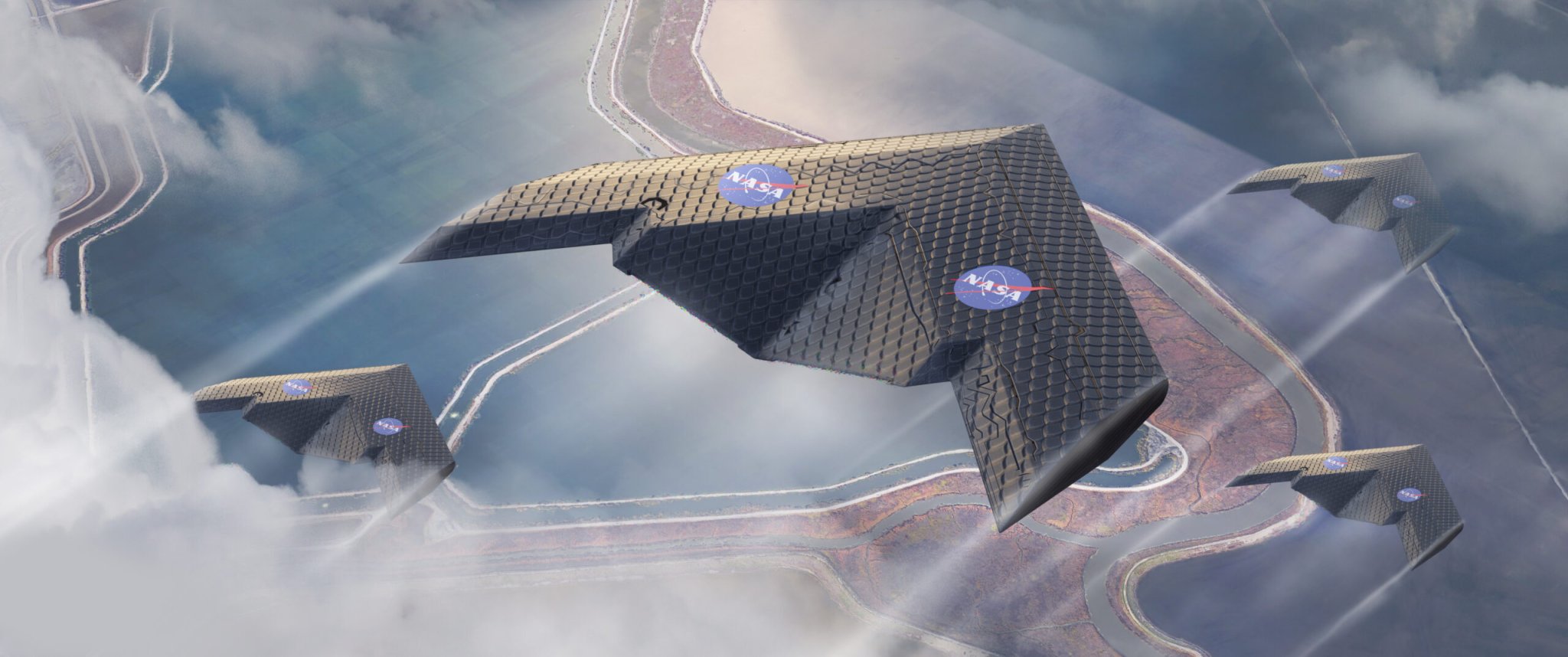

Commercial aircraft makers create their planes in a predictable shape: two wings attached to a tube. Of course, there’s more to them than that—there’s a tail and a horizontal stabilizer in the back, for example—but that’s the general idea. And the outer surfaces of those crafts have movable components that allow the plane to do crucial maneuvers, like turn or gain altitude.
But researchers from NASA, MIT, and other institutions are working on a plane concept that looks radically different from, say, a Boeing 737. The craft takes the shape of a flying wing, similar to a NASA plane called the X-48, or the B-2 Spirit Bomber. Its construction, however, sets it apart even further. The wing is comprised of many small hollow components that bolt together, making it stiff and light.
Those components—think of them like hollow lego bricks—are made out of plastic and shaped like octahedra, which look like two pyramids back-to-back. Some of them are reinforced with glass fiber, and some aren’t, meaning that the reinforced units are rigid and the others are “squishy,” says Ben Jenett, a doctoral candidate at the Center for Bits and Atoms at MIT and one of the authors on a study describing the airplane in the journal Smart Materials and Structures.

The result is that the airplane, which is just an experimental structure at this point, looks unlike regular planes, and is also made out of different materials—most planes are made out of substances like aluminum or carbon fiber composites.
“This type of aircraft is so different from the traditional tube and wing aircraft,” Jenett says.
On the inside of the wing, the construction has a lattice-like appearance. Because some of the components are more rigid than others, the researchers can “program” the wing by arranging those stiff or squishy materials in a specific way to control “the response that it has to an aerodynamic load,” Jenett says.
The research team created two prototypes, each with a wingspan of 14 feet. In one of them, they also added internal actuators that could move the wingtips and morph the wing shape. If the plane were actually flying—in this case, they tested it in a NASA wind tunnel—those actuators would allow the craft to do things like roll or even produce more lift.

Jenett sees applications for this type of aircraft design for “high altitude, long-endurance aircraft,” he says, for jobs like communications or observation. That means that you shouldn’t expect to fly in one.
“As much as I would like to say that we’re going to replace Boeing and Airbus with this, I know that’s probably not the reality,” Jenett adds. “But I do see a lot of bleeding-edge applications [for this technology] where traditional approaches just fail.”
This isn’t the only aircraft concept out there that looks novel and different—a new helicopter with two stacked rotors from Boeing and Sikorsky should be capable of going much faster than a regular helicopter, while Boeing and others are also working on electric vertical takeoff and landing craft. And other research from MIT created a flying model plane whose engine had no moving parts.
